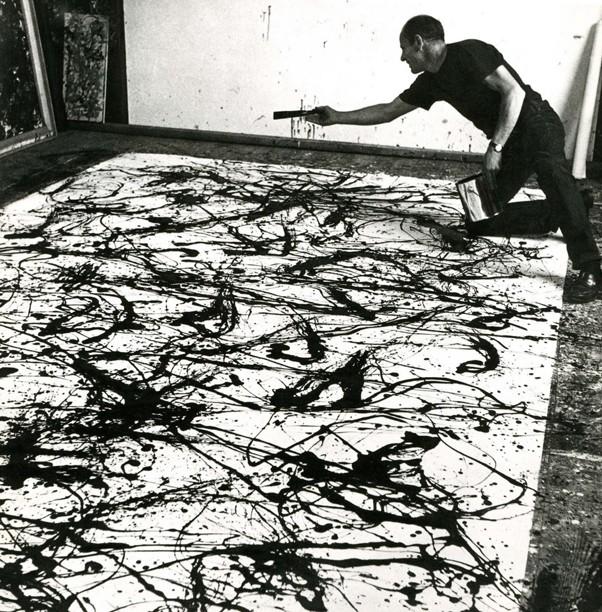Abstract expressionism is a movement in art that experiments with the disconnect between color and line, and the creation of illusion within reality. This limitless pictorial space was born from the hands of Jackson Pollock in 1947. We salute him today in honor of his birthday, Jan. 28, with kudos to the shock waves of change he made.
Wielding a can of paint, Jackson Pollock established, or rather disrupted, art as a structured medium in which boundaries exist. According to the Guggenheim collection, Pollock emerged on the brink of surrealism and was influenced by Pablo Picasso.
His dabbling in surrealism, cubism and impressionism put Pollock far out in terms of free-form thinking. Pollock’s abstract approach surpassed the textbook form that painting had previously been marked by.
Pollock was human. He was a rock star, an alcoholic and a mess, and his painting reflected that. A PBS article indicates the accidental nature of his work as cigarette butts, paint caps, rocks, dirt, matches and spare change, incidentally became a part of the paint.
Pollock stretched his canvases horizontally on the ground, then flung paint, swirled it with sticks and tossed it from cans. These drip style paintings, also known as “action paintings,” still hold preeminence in their originality in the 21st century.
Pollock channeled a surrealist method of painting by the subconscious, what the Guggenheim collection calls automatic thinking, “revolutionizing the potential for contemporary art and furthering the development of abstract expressionism.”
Pollock created a means to “intentional otherness,” a form of abstract painting absent in earlier works. Pacing the four sides of a monstrous painting, Pollock became one of the original performance artists — a concept that transcends contemporary art.
The celebrated chaos that Pollock influenced is still prevalent in art today. He originated the idea that expression starts from within and can be expressed in motion. Contemporary art would not be contemporary if Pollock had not liberated it from its structured roots.
“The modern artist is working with space and time, and expressing his feelings rather than illustrating,” Pollock once said. In a sense, he was bending boundaries for future generations.
Line, color, shape, form, intention and depth — defy the very principles of art, and what do you get?
A mess, ingenuity or Jackson Pollock. Happy Birthday.
– Audrey Molloy is a junior studying … She can be reached at arts@wilecat.arizona.edu.









